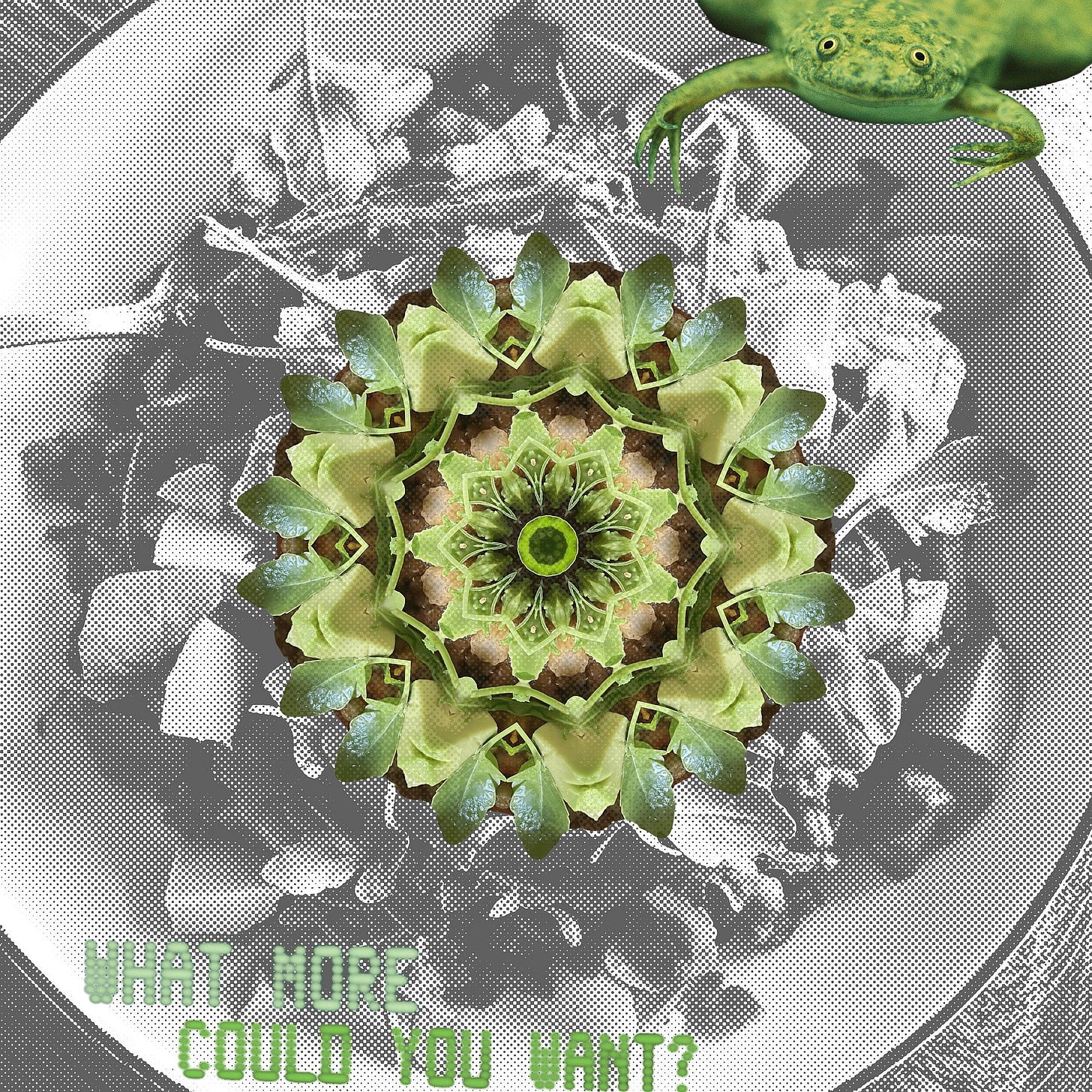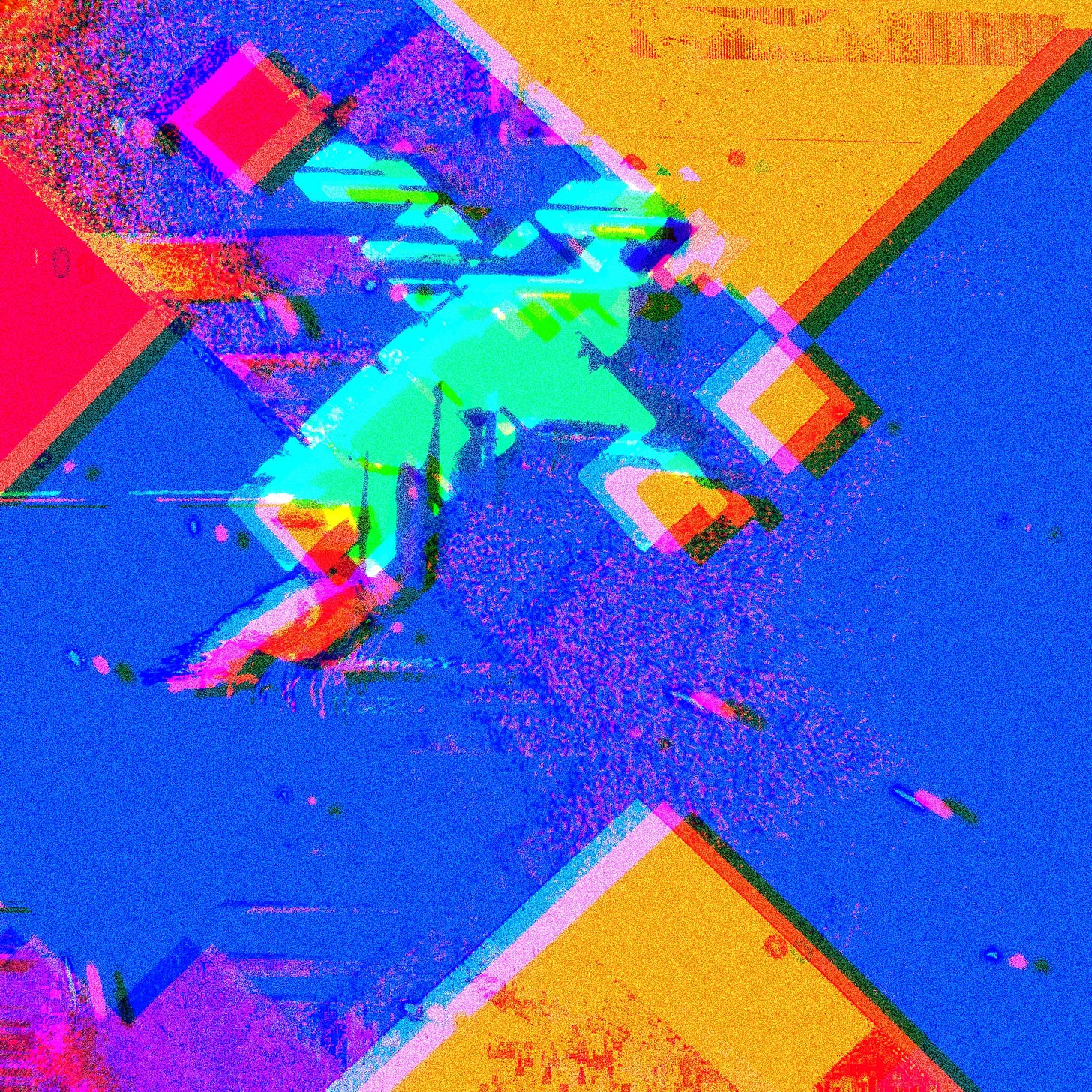Tell me your scrappy doodles are not art after you hear from these artists
Why the courage and curiosity to scribble is enough. Be at play, even when you don't know what you're doing.
When I spend loads of time on a collage, it’s just as likely to be met with shrugs as a piece I’ve casually thrown together in a few minutes.
You’ve probably had that in your writing, art, and any creative work you care to mention. Added time and effort and technique doesn’t equal added appreciation.
This doesn’t mean we should be slapdash. But I’m just as happy to be efficient with my situation as I am to work on stuff for absolutely ages. If you care about your work, celebrate it all.
And celebrate it as the art that it is.

I keep seeing artists I admire talk about their sketches as if they’re almost not worth thinking about. “I know it’s not much”, they’ll say. Or, “Just a little doodle, no big deal”.
But it’s the little things, the playfulness, the exploration, the curiosity… These things make the art what it is. You could scribble without much thought and still find meaning in it. The narrative may come before, or during, or after you start the art. When it comes to creativity, don’t sell yourself short.
Here are some recent videos of artists talking about play, randomness, doodles, and how they’re so important to their work.
JOHANNA DUMET
“It’s...a game for me.” / “I just accept it and embrace it.” / “I’m just as a child.”
What a good place to start! Art happens, and it’s playful. I’m totally on board with that.
“[The fool is] the most free person […] The fool nowadays is the artist...I’m just one of many fools who is presenting my art.”
Not taking things seriously is part of taking things seriously.
“The paintings are never finished until they are in the gallery.”
It’s still art, just in the process of being finished at any point. Everything is a work in process. A scribble may be a humble beginning to wonder and greatness!
“Everything you learn through your life makes you do what you do now.”
I’ve been creating art for just over a year now. But the decades of life before that were part of the learning process. I just didn’t know at the time.
SHIRAZEH HOUSHIARY
“I first of all think that every human being is an artist.”
In other words, do something. See where it takes you.
“The work of art is an experience. It cannot be described. The moment you try to describe it, you almost destroy it.”
Art is simply what it is. No need for opinions and judgements. Just movement and interaction and existing.
“I have no idea what I’m doing. And I like that because that not knowing is the best part of the process. Because you now make a relationship with something you don’t know.”
Art is formed in many, many ways. A brief moment here, an eternity-and-a-half there. Every time, new bonds are formed.
“Titles are very important, because a title indicates what the experience is like.”
This one is for me, because I love titling each piece to help with a narrative nudge. Take it or leave it, but if I can share a little extra about the relationship I’ve formed with my art, you may appreciate it. Or not. It’s all good.
JOSH SMITH
“There’s nothing to understand. There’s just something to see and something to feel.”
Similar to what Houshiary says. Art happens, relationships start, more emerges from that.
“There doesn’t have to be any precision.”
Your scrappy doodle could be a masterpiece. It could be a scrappy doodle. It may be discarded and it may live on forever. No need to decide straight away or play it down.
“I love cats... I put a cat in there.”
Sometimes you just do the art because you like the art. No big story, no major purpose. If you’re more of a dog person, why not put a dog in your next piece of art?
Or a cat, to juxtapose something. I dunno. It’s all play!
TOM BURCKARDT
The artist literally calls his paintings “very large doodles” in the video.
Burckardt also explains that the meanings and narratives aren’t always apparent at first: “I realised, after I started to make them, that they were much more about light.”
Again, art doesn’t have to be understood in advance for it to form and take shape.
Also again, who’s to say your doodles can’t go on to be in a gallery? Or, at least, maybe other people will see your doodles and fall in love with them? Right there, that’s an experience of art.
BRUNO GADENNE
“I am not one of the artists who always wanted to be an artist. It came gradually.”
Some people decide they want to be an artist when they’re just a few years old. Some call themselves an artist when they’re just a few years old. I hope they keep that title ongoing!
Other people don’t think about being an artist until much later. I started in my mid-40s. It’s been a lifetime coming, but I guess my path has been gradual too, just like Gadenne’s.
No need to deny the art or say you’re not an artist just because you’re no longer a child. Remember what Johanna Dumet says on that point: “Everything you learn through your life makes you do what you do now.”
“There is a whole lot of photographic retouching involved, where I usually completely change the lighting mood. [...] There is a lot of image editing here, but there is always at the origin, at the base, a travel photo.”
Another one for me. My works go through different amounts of post-processing and, sometimes, the final piece is unlike the layering part of the collage. But I’ve still put it together as a collage. Same with all the drawing and coding and photography that may be layered in a piece. I’ve done lots of these things myself, but I call practically every finished item a collage. Is it more like a digital mixed media composition? Maybe. But it doesn’t matter. Y’know, unless I choose for it to matter. Or… if the art decides that’s what it wants to be.
Respect the art’s wishes! 🫡
“It’s up to the viewer to find the thread. I’ll give some clues. And I’m not sure myself if I have all the elements of the story, but I like to suggest things that everyone can then interpret. I know not everyone will know what it is at first glance, and they may have different perceptions...I like the ambiguity.”
Ambiguity is a great place to finish. Once overthinking steps in, ambiguity starts to get problematic. So I embrace the ambiguity, the contradiction, and the unknown. I’m very much with Gadenne and Houshiary on this one—offer clues and titles and descriptions to guide viewers toward your experience. It’s up to the audience to take it or leave it. If your art gives someone else an experience, each time will be unique anyway. Sometimes it takes the initial guidance and sometimes it’s experience at first sight!
A little extra note: If you create something visual that ends up not engaging you in the way you’d hoped, that art may still be worth sharing. On a few occasions, I’ve posted collages that didn’t quite hit with me, yet I’ve had comments from people saying it’s one of the best things they’ve seen by me.
If that doesn’t speak to how personal the experience of art is for everyone, I don’t know what will.









Thanks for compiling all these videos in one place! Great post
Sketching is the spice of life. Doodling is theherbs